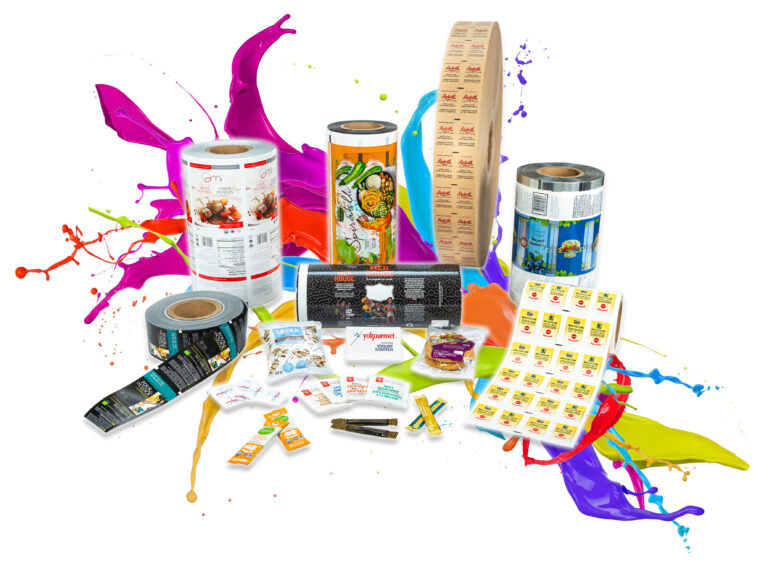
Flexible packaging refers to a way of packaging products using non-rigid materials. It offers a cost-effective and highly customizable alternative to traditional forms of packaging, and it has been gaining ground in a variety of industries. The food industry, for example, has joined the ranks of the many industries embracing this packaging solution.
The food retail industry has been under immense pressure to find innovative and eco-friendly ways of packing its products. Flexible packaging did just that, and it has been increasingly hitting the shelves ever since it was first introduced to the market. The reasons behind its success can be boiled down to two key aspects: cost-effectiveness and performance. Flexible packaging can be made from a variety of flexible materials. These materials include plastic, bubble wrap, paper, aluminum foil, and polythene. Flexible packaging offers a whole host of advantages. Here are a few key benefits that flexible packaging has to offer the food industry.
Flexible packaging gives manufacturers more scope to feature product information on their packaging. This information is printed on the surface of the flexible packing material, and provides key information about the product on offer. In terms of the food industry, flexible packaging allows the manufacturer to harness the full power of these descriptions, and the consumer can instantly gain key information about the product they are buying. This information can include details such as the expiry date, or the nutritional value. It may also include details about the ingredients, serving suggestions, recipes, as well as the best way to dispose of the used packaging.
Food contamination is one of the greatest threats to consumers of packaged foods. In the most severe cases, it can be fatal. The use of flexible packaging allows manufacturers to reduce the risk of foods becoming contaminated, while also helping to prevent the spread of food-borne diseases and the presence of physical contaminants, and the associated health risks. Various physical contaminants, including insects, hair, dust and rodent droppings, can enter the food supply chain and make the food we eat unsafe. Flexible packaging allows manufacturers to minimize this risk. Flexible packaging also facilitates safe and hygienic food handling in retail stores, and ensures that food stays fresh and high-quality—from the shop shelf all the way to the kitchen table. Since[sb1] modern food distribution hinges on the continual transportation of foodstuffs from one location to another, ensuring that goods are stored in a safe and hygienic way is paramount.
The world of today is constantly changing. New developments are taking place all over the world on a daily basis. One of these innovations is e-commerce. E-commerce allows companies to sell their wares and products online, and to create a direct link between the vendor and the buyer. The process is simple: first, a seller posts a product for sale online. Then, the interested customer places an order. Finally, the order is shipped straight to their doorstep.
The food industry is no stranger to e-commerce. Food e-commerce covers baked, fried, and freshly cooked foods, all of which can be purchased online. Flexible packaging also plays a key role here, helping to drive sales for food-related e-commerce businesses. It does so by ensuring that food is well-packaged and safe for consumption. For example, it helps prevent bacterial contamination, dust, as well as oxygenation of food and soft drinks. In addition, it also facilitates safe transportation and makes it easy to identify and dispose of products that are not fit for sale. Above all, flexible packaging makes consumers feel more confident about buying pre-packaged food.
The modern world is increasingly dynamic and fast-paced, and people have increasingly busier lifestyles. For many, it’s a constant juggling act between personal commitments and various family and work-related responsibilities. Though consumers of course continue to crave high-quality food, their opportunities to go and buy it are more and more scarce. This is where food retailers come in—they offer convenience and a mode of consumption tailored to people’s hectic lifestyles. By doing so, they help to reduce plastic waste as well as food waste, by allowing people to just buy what they need, when they need it. Moreover, the convenience offered by flexible packaging helps enhance brand resilience in an ever more competitive market, as well as helping retailers avoid an overloaded supply chain. It helps food retailers improve food handling, logistics, storage, and sales. Flexible packaging also allows retailers to conveniently showcase their products to potential consumers, while allowing for easy transportation from store to home.
As food and packaging production increases, so does the need for high-performing materials. Flexible food packaging allows food manufacturers to extend the shelf life of their products. It does this by regulating carbon dioxide, oxygen, and moisture levels, keeping products fresh and for longer. In addition, flexible packaging has also provided the food retail industry with a number of key solutions to reduce food waste, material waste, and environmental pollution. Flexible packaging also prevents bacterial contamination of food, ensuring that products stay true to their use-by date, as less bacteria means a longer shelf life. To top it all off, flexible packaging helps improve flavor, texture, and nutrient retention, while also allowing retailers to minimize food waste.
Flexible packaging strikes the perfect balance between weight, performance, and production cost, as well as providing a sustainable and recyclable packaging solution. Indeed, flexible packaging is one of the most eco-friendly ways we can package our food, allowing us to protect our planet. It also reduces greenhouse gas emissions by about 13% compared to other plastic packaging . Furthermore, it helps reduce packaging costs in the food industry by around 40%, and reduces the weight of packing materials by over 50%. When it comes to the food industry and the consumer, flexible packaging is truly a win-win.